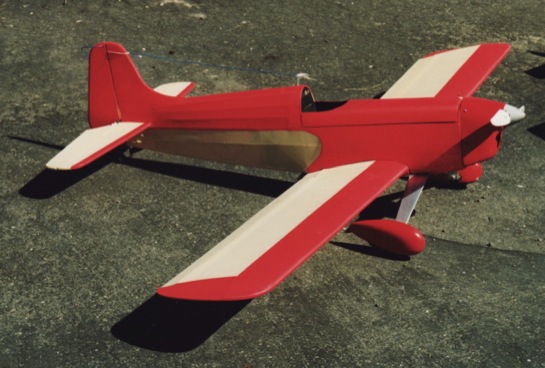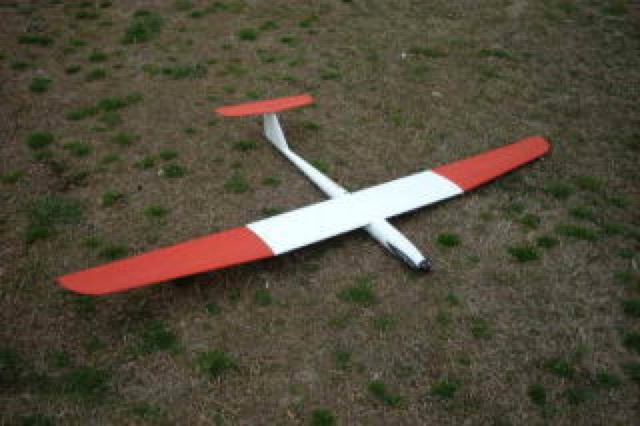Roughly in chronological order and undoubtedly missing many now forgotten models especially in the earier days:-
In the UK
I used to fly at the school field to begin with and visited White Sheet Down or Kimmeridge for slope soaring. After a couple of years break when I went to college I flew mostly at Butser Hill near Petersfield in Hampshire, with the Meon Valley Soaring Association. I can't even begin to remember all the models I had back then but let's see what I can recall -
- Veron Impala: a famous kit of its day. It was terrifyingly expensive seeming in 1975 and to be honest was a lousy kit, with poorly die-cut (or die-crunched as we used to say) parts and strip wood that ranged from rock-like to stringy trash. It never flew well, even in the hands of far more experienced flyers. I suspect that its violent lurchings may have planted the seeds of the 3D flying style in certain vulnerable minds.
- The Blandford Special: an OD by one of the schoolteachers involved with the club, designed to be simple to build and easy to fly as a beginner. That was the last model I ever tried to fly with a reciprocating infernal confusion engine.
- Middle Phase: a classic slope-soarer from Chris Foss, still on sale and still rightly popular.
- Mini-Phase: another Foss design with unusual solid balsa wings of a very high aspect ratio.
- Mini-Racer: a small, fast, sloper with FG fuselage and veneered foam wings.
- Robbe Arcus: after a visit to the Sandown model show one year I just had to get one of these. The Robbe team displayed one running a hugely expensive German motor on 27 sub-C cells as an example of electric flight being more than just stumbling ground-huggers. I couldn't come close to such a powerful setup but even with much more modest propulsion the Arcus was very useful for windless days at the slope. It started my long term interest in e-flight.
In Silicon Valley, CA
After moving to the US in '91 I was paid well enough to be able to afford much better flying toys. For the first few years I flew largely at the Rancho San Antonio State Park site and then after moving to the other side of the SF Bay I joined the Pioneer R/C Club to fly at their sites, the South Bay Soaring Society for glider flying and then after the loss of the Pioneer club field we formed an informal group to use the really rather nice Baylands Park field.
- Great Planes electri-Cub: a not-at-all bad model of a Piper Cub and a pretty good first power electric model. It was powered by my first high quality motor (an Astro 05G) and flew pretty well. Performance was entirely adequate on 7 sub-C cells.
- Great Planes electro-Streak: one of the classic e-models of its day, also powered by an Astro 05G and 7 cells. Just powerful enough to pull good loops from level flight and really rather like flying a slope soarer in a modest wind.
- Robbe Arcus Pro: same as the plain Arcus except for a nice quality glass fibre fuselage. Another Astro 05G powered model and a pretty good soarer, it had enough power to climb well to a good altitude and then catch thermals or just zoom around.
- TigerKitten: the famous Bob Benjamin kit and one of the first e-models to really show that eflight was really ready for normal modellers.

This was powered originally by an Astro 15G and maybe 8 cells but after some sand got into the gearbox and ground the teeth off I replaced it with one of the first affordable brushless setups. With the Aveox 1406/3YG and 12 cells it had enough power to really put it about a bit. Outside loops and split S climbs were no problem. - Clancy SpeedyBee: the little hooligan model

This so-ugly-it's-cute model was a lot of fun with an Astro 05G and insane with the Aveox motor. It could loop in its own wingspan yet slow down so much that I often landed it going backwards in a mild breeze. 'Humphrey' met his end whilst I was showing off to a visiting friend and forgot that important old flyers rule that goes
When inverted, down is up and up is expensive.
- Pik-20: my first large scale glider, built from a purchased GRP fuselage and wing cores that I sheeted and pressed myself.

It flew rather nicely for several years until I managed to remove both wings at once by trying to fly between the two branches of the only tree on the Glider Hill slope! After posting questions on the newsgroups asking for scale decoration ideas I got a batch of photos from a generous Dutch owner and painted it up to match his real Pik-20. - Salto: I've had two Saltos. The first was a tiny 53" span model from Icaré in Quebec which flew nicely with enough wind - a gale was about right.

Still it looked lovely in the air. I also built a much large 2.5m version from the Viking Models fuselage and a pair of glassed foam wings. It looked great but was far too heavy to fly in typical conditions. - MDM Fox: I think this is one of the most beautiful aircraft ever designed, right up there with the Spitfire.

The first Fox I had was a 2m glass/foam kit which looked pretty in the air and lasted until it took a dunk in the reservoir at Los Banos; it survived the actual crash but I had a little trouble in the recovery, including being jumped on by a buck deer, threatened by every rattlesnake in the park, and sliding back down the several hundred feet of slope several times. By the time I had made it back to the top again - after several hours - the model was a little worse for wear from being used as a piton. Later I got a 3m Fox from Modellbau Steber in Germany. This is a lovely model with surprisingly good light wind behaviour despite the 24oz sq.ft. wingloading. - Balsacraft Spitfire: 48" of pure joy.

A nice model to build and a lovely one to fly. With the Aveox 1406/3YG, 12 cells and a 12x8 prop it flew sweetly on minimum throttle and the gearbox whine was unnervingly like the Spitfires I used to hear flying over the house in Winchester back in the UK. This model even made a small appearance in QuietFlyer. - Casavos Vortex: a real old warhorse this one. 48" simple taper wing. Fairly skinny, minimal fuselage, very fast even on a modest Jeti 15/4 and 8 cells. After 15 years I'm still flying it regularly and still amazing the flightline observers with its speed.
- Seledkin: this is a serious hotliner with breathtaking performance. 2m of vertical whoosh with fabulous soaring capability once at altitude. Every now and then one runs into someone that thinks electric powered models are limited to staggering around the sky like a sick cow; this normally cures that opinion. All carbon moulded, aveox F12, 12 cells, flaps, ailerons, elevator and oh-my-ghod-it's-scary throttle.
- Elipsoid: a rather gentler e-soarer with lovely elliptical wings. A nice ARF with good thermalling capabilities for quieter days than the Seledkin provides. Lost to probable RF interference in silicon valley's rather nasty RF environment; a death spiral from several hundred feet into concrete left very little to even think of repairing.
- MPX Twinstar: a twin engine hooligan and a worthy successor to the SpeedyBee.

Despite being powered by just two puny speed 400 motors with dinky little props this would zip around like it was trying to stop you noticing how ugly it was. Tough as old boots - I think it was made from old boots - and repairable in moments with 5 minute epoxy this got banged around the sky for several years until I gave it to some youngsters in need of a tough one to learn on.
On Vancouver Island BC
In '04 we moved north and I started flying with the PDQFlyers in Nanoose. This is the first field where I've flown with trees at the borders and it is decidedly unnerving after years of 'nothing in front of me for miles'. The big change really is suddenly my nearest model store is over an hour away and I have to obtain almost everything by mail. I've added these models recently -
- MaxxAir Xtra300: small foamy 3D thingy that crashy smashy ofteny. Terminally...
- Hyperion Extra 10e: one of the small Hyperion scale aerobats. Lovely little thing that I passed on to a fellow club member a while ago.
- Hyperion Sukhoi 25e: a bigger scale aerobat with plenty of power. Also passed on to a fellow club member.
- Page Aviation 80" SuperCub: lovely.

Quite scale to start with and I've added lights from Curtek, scale landing gear from piperj3gear and I'm attempting to make it a decent scale representation of the UK supercub registered as G-CUBN. - Page Aviation 40” supercub: now in new smaller size for times when you’re not so hungry! Recently sold because I just haven’t been flying the small models.
- Seledkin mkII: after smashing the wing centre panel of my original I decided to replace it with an all new version. This one has huge flaps in the centre and now I can use crow braking for landings, a massive improvement. It had that old Aveox F12 motor and 12 cells until about 2015, when I updated to a modern brushless out runner and LiPos. Right now it has a Turing 'GliderDrive' motor and 4S3300 powering it, which is a significantly more powerful setup.

- TigerKitten: yes, another one!

I found a short kit on offer and couldn't resist it. Initially I put the same Aveox 1406 motor in as the first TigerKitten but recently re-motored it with a $29 outrunner from Turnigy and run it from 4S4000 li-po packs, saving perhaps 8oz weight and better than doubling the power. This makes for a very spirited flyer indeed. - TMRC Fournier RF-4D 1/4 scale powered glider.

This is an enormous model and my first glider with a retract. A relatively modest Axi 4120 motor powers it from a 5S5000 li-po battery and I typically get 15-30 minutes flights from it. - Aeroworks 72" span Yak-54: dramatic, large, scary. It has a vast Turnigy SK motor capable of over 3hp, a 20" prop, 10S5000 li-po battery, digital servos and seems to be very promising.

- Adrian Britton Spitfire 36": finished, but not yet flown as of May ’18, which is an embarrassing 10 years after starting to build it. Sigh.
